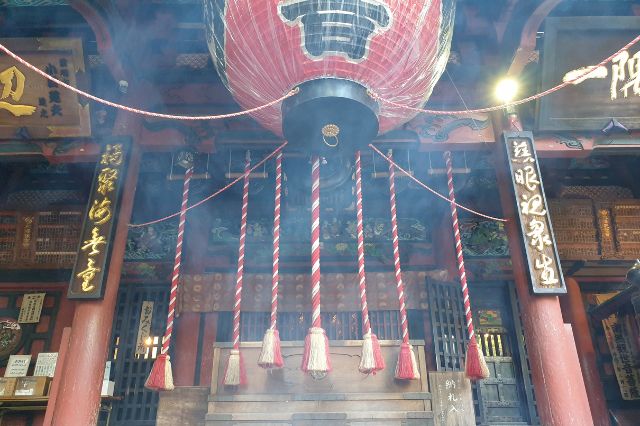
Visiting temples and shrines in Japan is one of the most meaningful parts of traveling through the country. These sacred places are not simply sightseeing spots — they are active environments where people come to pray, show gratitude, remember family, and seek guidance. The calm atmosphere, historic architecture, and strong connection to nature reflect spiritual practices that have shaped Japanese culture for centuries. Whether you are at a Buddhist temple with incense drifting through the air or a Shinto shrine marked by a bright red torii gate, you are entering a place that continues to play an important role in everyday life.
Understanding basic etiquette such as how to walk through the grounds, how to use a purification basin, where to take photos, and how to approach an offering hall — helps you feel confident and respectful as you explore. It also allows you to see more than beautiful buildings; you gain insight into a living tradition. These small actions show appreciation for the people who maintain the site, the visitors who are there to pray, and the long spiritual history you are stepping into.
Learning these gentle customs before your visit can turn a quick stop into a cultural experience — one where you notice the details, move more slowly, and feel a deeper connection to Japan’s heritage.
Visiting Japanese SPIRITUAL SITES:
A Practical Etiquette Guide
1. Understanding the Difference Between Shrines and Temples in Japan
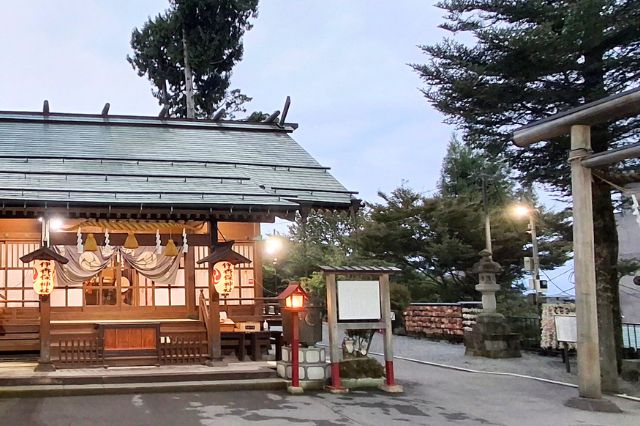
Japan has two major spiritual traditions that often exist side by side: Shinto and Buddhism. Both traditions influence everyday life, seasonal events, and the landscape of Japanese cities and countryside — yet they differ in their beliefs, structures, and customs.
Shrines (神社 / jinja) belong to Shinto, a tradition rooted in nature worship and respect for kami. Spirits connected to mountains, rivers, trees, ancestors, and forces of the natural world. You can usually identify a shrine by its torii gate, which marks the entrance into sacred space. Japanese shrines often feature prayer halls for offering gratitude, guardian statues such as foxes (inari shrines) or lion-dog komainu, and areas dedicated to purification and rituals for life events such as New Year visits, safe childbirth, and local festivals.
Japanese temples (寺 / tera or ending in -ji) are part of Buddhism, a religion that arrived in Japan from the Asian continent more than 1,400 years ago. Temples are places to honor the teachings of the Buddha and to show respect to figures such as Bodhisattvas, Dainichi Nyorai, Kannon, and other Buddhist icons. Temple grounds commonly include a main hall for prayer, a pagoda or stupa, and sometimes a cemetery, as Buddhism is closely associated with memorial practices and honoring ancestors.
Because many communities in Japan maintain both traditions, some travelers may notice cultural overlap — a reminder that Shinto and Buddhism have coexisted and influenced one another for many centuries. However, the goals of worship differ: Shinto often focuses on blessings and harmony in this world, while Buddhism focuses on spiritual guidance and the path to enlightenment.
Recognizing whether you are visiting a shrine or a temple can help you follow the correct customs — from how to bow, where to place offerings, to whether you clap your hands or remain in silent prayer.
2. Dress and Personal Presentation
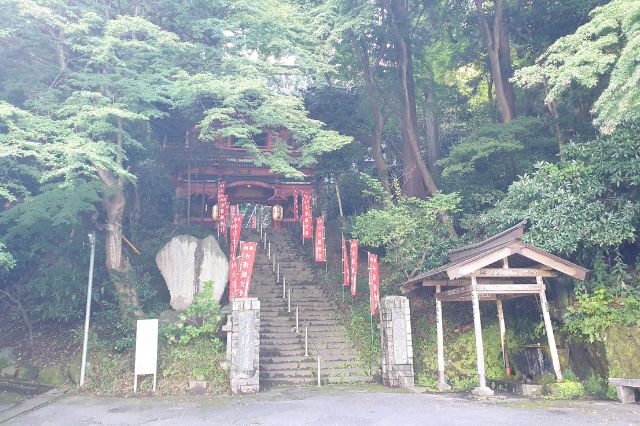
There is no formal dress code enforced at most temples and shrines in Japan, but modest clothing is strongly recommended as a sign of respect for the sacred environment. Clothing that covers the shoulders and knees is most appropriate, especially when approaching main worship halls or participating in prayer. Avoid swimwear, very short shorts, low-cut tops, or shirts with offensive graphics. These can appear disrespectful to others who are there to worship or reflect quietly.
Footwear also matters. Many Buddhist temples require visitors to remove their shoes before entering certain buildings, such as the main hall, tatami rooms, or cultural treasures. Wearing shoes that are easy to slip on and off, like sneakers or loafers, makes the experience smoother and keeps the entry area flowing without delay. If offered indoor slippers, these are provided to protect floors, so follow the instructions and leave shoes only in the designated spot.
Additionally, keeping hats off when you stand directly in front of a worship hall is considered polite, as is avoiding loud accessories like clinking bracelets or high heels on wooden floors. These simple considerations help maintain a calm atmosphere and show appreciation for the space that many visitors treat with deep reverence.
3. Entering the Sacred Space
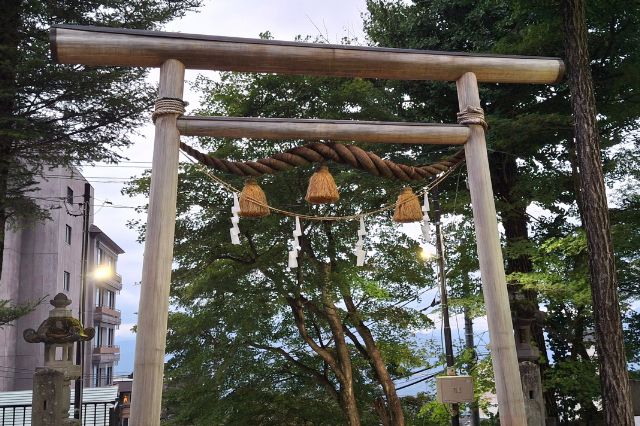
3.1 Shrines: Torii Gate & Pathways
When you arrive at a Shinto shrine in Japan, one of the first things you will often see is a torii gate—a symbolic entrance that marks the shift from the everyday world into a sacred realm. Passing through a torii is understood as stepping into a space where the divine kami (spirits of nature, ancestors or deities) may be present, and your behaviour should reflect that pause.
Here are key guidelines for approaching the gate and the pathway:
Bow once before entering the torii: Many local guides suggest a brief bow of respect before passing under the gate. This allows you to acknowledge the sacred space you are about to enter.
Walk to the side of the path, not the centre: In Shinto tradition, the exact centre of the approach path is reserved for the deity. To avoid inadvertent disrespect, keep slightly to the left or the right. This is widely cited in visitor-etiquette sources.
Proceed with quiet steps: The moment you cross the torii is a transition; slow your pace, turn off loud conversation, and become aware of your surroundings—the rustle of leaves, the sound of wind, the presence of the shrine.
If you pass through multiple gates: Some large shrines have several torii in succession. Each one reinforces the sacred nature of the space. A respectful nod or bow at each new gate is a quiet way to acknowledge it.
Pathways may lead through nature: Many shrine grounds run through forests, beside rivers, or across mossy stones. Be mindful of uneven surfaces, and keep your pace gentle so you can absorb the setting and avoid distraction.
By following these simple practices, you show respect for the shrine, for the kami, and for the many other visitors who are there with various intentions—prayer, reflection, gratitude, or simply the experience of nature and tradition in Japan.
3.2 Temples: Main Gate & Grounds
At Buddhist temples in Japan, the entrance often feels quieter and more grounded than a shrine, reflecting Buddhism’s focus on reflection and inner awareness. Instead of a torii, you may pass through a sanmon (main gate) or niōmon (guardian gate), sometimes protected by fierce guardian statues called Nio. Passing through this gate represents crossing into a place devoted to prayer, teachings, and respect for the Buddha.
Here are courteous practices when entering temple grounds:
Pause briefly before entering
A gentle bow toward the main hall or gate is a simple gesture of respect. Even if others do not, this is an appropriate and polite custom.Walk mindfully
Move at a steady pace, avoiding loud voices or rushed behaviour. People may be praying, remembering loved ones, or simply seeking peace.Stay aware of sacred spaces
Some structures or objects are not meant to be touched—look for ropes, railings or signs indicating boundaries around statues or altars.Follow the flow of worship
Temple grounds may include pathways leading through gardens, pagodas, incense areas, and memorial spaces such as graveyards. Follow posted signs and move in the same direction as others when approaching a hall.Respect worshippers
Give space to those offering incense, praying silently, or paying respects to ancestors. Avoid stepping directly in front of someone praying.Be careful with photography
Outdoor photos are usually allowed, but photography inside halls or near sacred statues may be restricted. Look for posted guidance or ask if unsure.
Many temples emphasize the idea of entering with a calm heart. Even if you are there to sightsee, showing quiet awareness honours the purpose of the temple and those who maintain these spiritual places.
4. Purification (Chōzuya / Temizuya)
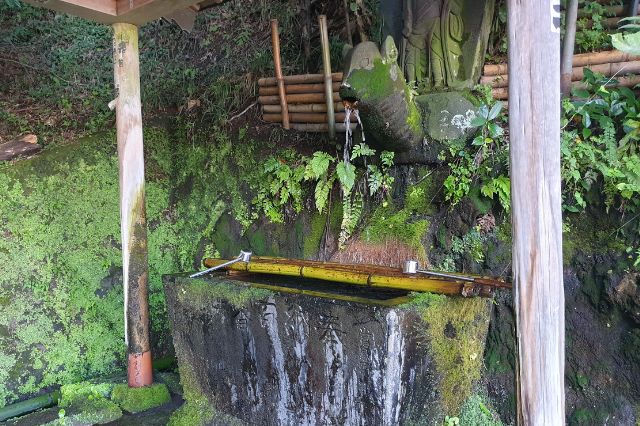
Before approaching the main hall at many temples and shrines, visitors pause at a purification basin, known as a chōzuya or temizuya. This simple water ritual represents preparing the body and mind before entering sacred space. It is a gesture of respect, not a requirement for worship, and can be done quietly even if you are unfamiliar with the customs.
How to purify respectfully:
Pick up the ladle with your right hand and pour water over your left hand.
Switch hands, and pour water over your right hand.
With your left hand, pour a little water into your palm and gently rinse your mouth.
Do not drink the water — discreetly spit onto the stones beside the basin, not back into the basin.
If you do not feel comfortable with the mouth-rinse, many temples allow hand purification only, which is perfectly acceptable.
Lift the ladle upright so the remaining water runs down the handle to cleanse it for the next person, then set it back neatly.
Common guidance emphasizes that this ritual is not about cleaning for hygiene; it symbolizes washing away distraction and entering with a calmer mindset.
A few helpful notes:
Take your time — this is not a rushed action.
Keep movements small to avoid splashing others.
If unsure, simply observing others first is a respectful choice.
Performing purification, even simply by rinsing your hands, shows appreciation for the tradition and deepens your connection to the experience ahead.
5. Shoes, Bags and Indoor Behaviour
In many temples and some shrines in Japan, shoes must be removed before entering indoor worship halls or tatami-matted rooms. Always look for signs or watch what local visitors do. If there is a step up into the building or a rack for shoes, take that as a cue to remove them. Place your shoes neatly with toes pointing outward so they are easy to slip back on.
After removing shoes, you may be offered indoor slippers. These are usually provided to protect floors — use them only where indicated, and remove slippers before stepping onto tatami mats if instructed, as tatami is traditionally kept bare. Socks are recommended for comfort and cleanliness, especially in colder months.
Regarding personal items, large backpacks or bags can accidentally bump into objects or disturb others in narrow walkways. Holding your bag in front of you or keeping it close to your body is a considerate choice. Avoid bringing food or drinks inside worship areas, and refrain from applying perfume or hand sanitizer with a strong scent just before entering — subtlety is appreciated in these quiet environments.
Once inside, move calmly and quietly. Phones should be silent, and photography rules vary — some halls or statues are not to be photographed at all. If you are unsure, simply ask or choose not to take a picture. Respectful posture is also valued: removing hats in front of the main altar, facing forward when you pause or pray, and keeping hands free of distractions (like snacks or shopping bags).
These practices help protect sacred objects and ensure that everyone — including those who come to worship — can enjoy the peaceful atmosphere of the temple or shrine.
6. Prayer & Offering Manners
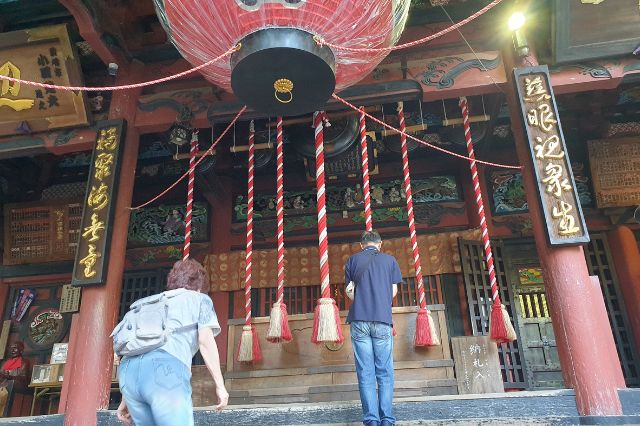
6.1 At Shrines
At many Shinto shrines in Japan, there is a familiar — though not universal — pattern for making a proper offering:
Toss a small coin into the offering box (賽銭, saisen) with quiet respect.
Stand straight and bow twice deeply from the waist.
Clap twice your hands, letting the sound carry intent and gratitude.
After the claps, bow deeply once more and remain still for a moment of reflection.
While this pattern is widely observed, the most important aspect is your sincerity and calm — you do not need perfect form, only respect. Clapping, bowing, and silence signal your awareness of entering a space where the kami (spirits) may listen.
6.2 At Temples
At temples, the approach tends to be more personalized and quieter. Visitors often:
Light one or more incense sticks, placing them in the burner near the main hall.
Make a small offering in the donation box (if present) and bow once or twice, depending on the site.
Sit or stand in silent reflection, meditation, or prayer.
Unlike shrines, there is no universal “clap-bow-clap” routine. Instead, the emphasis is on stillness, focus, and connecting with the Buddha, Bodhisattvas or temple deities present in the hall. Many temples encourage you to observe what worshippers do and follow the flow with humility.
7. Photography, Touching & Children
Photography is generally allowed in outdoor areas of temples and shrines, where many people enjoy capturing the scenery, architecture, and seasonal beauty. However, indoor worship spaces often prohibit photos, especially of sacred statues or altars. This can vary by location, so always look for posted signs or observe how others behave. If you are unsure, choosing not to take a photo is the most respectful option.
Sacred objects — such as statues, prayer ropes, sutra scrolls, offering tables, and ritual instruments — are not meant to be touched unless a sign specifically invites you to do so. Even well-intentioned contact can cause damage over time, especially to items made of wood, cloth, or lacquer. Railings and ropes are often placed to protect fragile areas, so please do not lean over or step past them.
Children are very welcome at temples and shrines. Many families visit together for milestones, seasonal events and cultural traditions. If you are traveling with children, gently remind them to walk rather than run, use quiet voices, and handle objects carefully. Exploring these spaces can be a wonderful learning experience with a little guidance.
By being mindful of photography, touch, and movement, you help maintain the calm and respectful atmosphere that worshippers and caretakers work to preserve every day.
8. How to Move Through the Site
Temples and shrines are designed as spaces for reflection, and the atmosphere is an important part of the experience. Walking slowly allows you to appreciate the architecture, stone pathways, ancient trees, and the subtle sounds that define these sacred places. Moving calmly also prevents accidental disruption of visitors who are praying or in quiet contemplation.
Keep conversations gentle and phones silenced. Eating or snacking while walking through the grounds is discouraged — food is usually enjoyed after leaving the worship areas or in designated spaces. Quick, continuous bursts of photography near main halls can distract others, so take your time and step aside if you want a focused moment with your camera.
Benches and resting areas exist to support peaceful breaks. They are meant for quiet breathing and observation, not loud group gatherings or phone calls. By showing awareness of your surroundings
9. Collecting Goshuin (Temple & Shrine Stamps)
Many temples and shrines in Japan offer goshuin (御朱印) — a unique combination of handwritten calligraphy and official stamps applied to a special booklet called a shuinchō (朱印帳). These marks commemorate your visit and often include the temple or shrine name, the date, and sometimes the name of the deity or Buddha worshipped at that site. Every goshuin is different, and many are considered small works of art.
If you would like to collect goshuin:
Bring a shuinchō (available for purchase at many religious sites or stationery shops).
Visit the main hall first to pay respects before requesting a stamp — it shows that you are there for more than collecting souvenirs.
Offer a small donation (commonly a few hundred yen), given directly to the attendant or placed where indicated. The amount can vary by location.
Some sites may be busy, especially during holidays or pilgrimage seasons, so be patient — writing a goshuin takes time and skill. If an area is closed or too crowded, simply enjoy your visit and try again another day.
While collecting goshuin is a memorable part of travel in Japan, it is entirely optional. The most meaningful part of your visit remains the quiet moment of appreciation you give to the place itself.
10. Respecting the Site & Nature
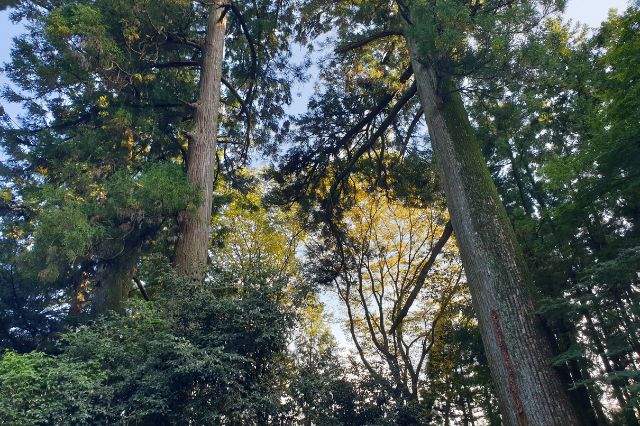
Temples and shrines in Japan are often located in beautiful natural surroundings — forests, mountains, riversides, or landscaped gardens that hold spiritual meaning. The connection between nature and worship is especially strong in Shinto, where kami are believed to reside in trees, rocks, and water, and in Buddhism, which values calm and mindful environments for reflection.
To help preserve these sacred settings:
Stay on designated paths: Many areas contain protected moss, delicate roots, or historic ground that can be easily damaged by foot traffic.
Do not pick plants, break branches, or disturb wildlife: Natural elements contribute to the spiritual atmosphere and are treated with respect.
Dispose of rubbish properly — or carry it with you: Trash bins may be limited to keep grounds clean and maintain a quiet atmosphere.
Watch your step around stone surfaces: Paths and stairs can be worn smooth by generations of visitors; taking care also prevents accidents.
These small actions show that you understand the site is not only a place to see, but also a place to protect — a living environment shaped by centuries of prayer, community care, and the rhythms of nature.
11. What to Wear & Bring
Preparing a few thoughtful items can make your visit to temples and shrines both comfortable and respectful. While there are no strict clothing rules, modest and practical choices help you move smoothly through sacred spaces and adapt to changing conditions.
What to bring and wear:
Small change in Japanese yen
Coins such as ¥5, ¥10, and ¥50 are traditionally used for offerings (saisen) and for obtaining goshuin (stamp calligraphy). Having coins ready avoids needing to search through your wallet at the front of a queue.A small hand towel or tissues
Purification basins may not provide paper towels, so carrying your own allows you to dry your hands discreetly after using the ladle.Comfortable, slip-on footwear
You may be asked to remove your shoes inside temple buildings. Shoes that are easy to take off, and that have good grip for stone or mossy surfaces, are ideal.A compact bag or backpack
Keep belongings close to your body and avoid large bags that may bump into others or sacred items in narrow walkways.Weather-appropriate and modest clothing
Layers are useful in Japan’s variable climate, especially in mountain or forest locations. Covering shoulders and knees is appreciated as a sign of respect. In colder seasons, gloves and warm socks are helpful when shoes must be removed indoors.Phone on silent mode
Even if you use it for navigation or photos, turning off sound preserves the calm atmosphere others come to enjoy.
These simple preparations help you move confidently and respectfully, allowing you to focus on the quiet, cultural moments that make visiting temples and shrines in Japan so memorable.
12. Final Thoughts
Visiting a temple or shrine in Japan offers a moment to step away from busyness and appreciate a long-standing cultural tradition that continues today. By moving slowly, observing how others behave, and following a few simple etiquette points, you show respect both for the space and for the people who come to worship or reflect.
Perfection isn’t expected, sincerity is enough. Each visitor brings their own intentions, whether it’s curiosity, gratitude, remembrance, or simply enjoying a peaceful walk through nature. What matters is acknowledging that these places hold meaning for many generations.
The architecture, gardens, and rituals may be memorable, but often the most lasting impression comes from the calm atmosphere itself, and the small, thoughtful actions that help preserve it. With awareness and respect, your visit becomes more than sightseeing. It becomes part of the living culture that keeps these sacred spaces thriving.



